This easy Dutch oven cranberry pecan bread requires no kneading and is ready start-to-finish in just a few hours! Be sure to read the entire post for our most helpful tips and step-by-step photos.
This cranberry pecan bread is crispy, cozy, and perfect for fall and winter! Serve it alongside your Thanksgiving spread, or wrap it up as a gift for friends and family at Christmas.
We're baking this pecan cranberry bread in a Dutch oven to get a nice, crusty bread with a crispy crust and soft interior. (No Dutch oven? No problem - check out one of our methods for baking bread without a Dutch oven!)
Jump to:
Baking timeline
This bread is ready to eat in just a few hours – and most of that is inactive time! Here's a quick snapshot of our order of operations:
- Proof the yeast and prep the other ingredients - 10 minutes
- Mix the dough - 5 minutes
- Let it rise - 1 hour
- Shape the loaf - 5 minutes
- One final rise - 30 minutes
- Bake - 40 minutes
- Let it cool - 1 hour
Ingredients
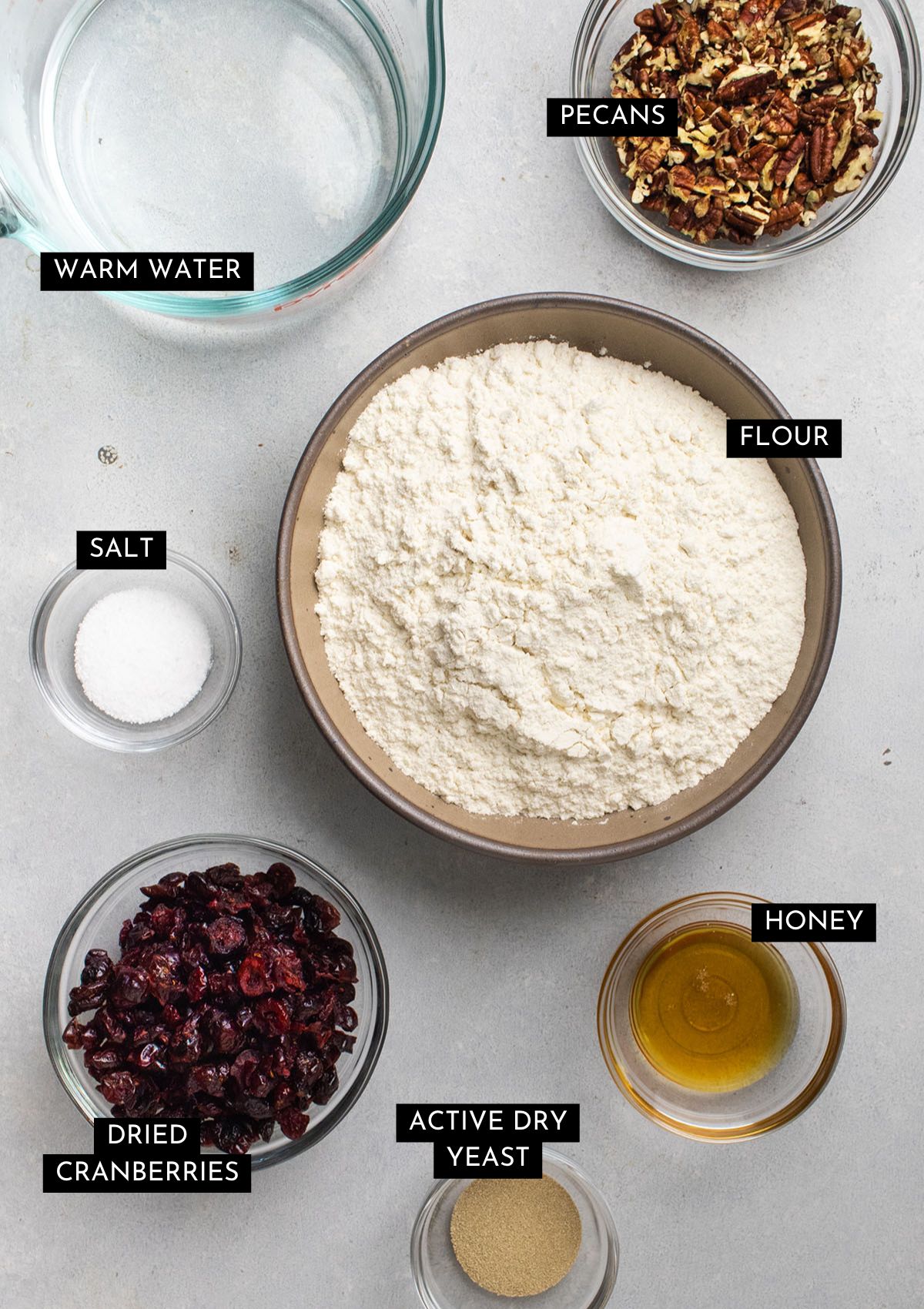
This is a pretty straightforward bread recipe: if you've made our Easy Crusty Bread before, this cranberry bread will feel nice and familiar. Here's what we're working with:
Basic Dough Ingredients
- Active Dry Yeast - Our go-to yeast is reliable and moves quickly without compromising on flavor. (You can use Instant Yeast instead: just reduce the amount by 25% and keep an eye on the dough since it may rise more quickly.)
- Honey - Adding a bit of honey or sugar at the start of this recipe helps the yeast activate and foam up (called blooming or proofing).
- Warm Water - A good rule of thumb is to use water that is "warm to the touch", between 95° and 110° Fahrenheit. If the liquid is too hot, it will kill the yeast (and your bread won't rise).
- Salt - Every brand of salt is a little bit different, which can make it tough to measure by volume (with teaspoons). We recommend measuring by weight to keep things simple - weight measurements are the same no matter what brand of salt you use! We use Diamond Crystal Kosher Salt in our baking; if you use Morton Kosher salt or any type of table salt and are measuring by volume, you'll want to reduce the salt a little bit in this recipe.
- Flour - After extensive testing, we recommend using King Arthur All Purpose Flour (our #1 choice) or Bob's Red Mill All Purpose flour in your bread baking. These flours have a high protein content, which basically just means they'll do the best job at getting you a taller, airier loaf (we go into this in so much more detail in Everyday Artisan Bread). You can also use bread flour in place of all purpose flour if you have it on hand!
Mix Ins
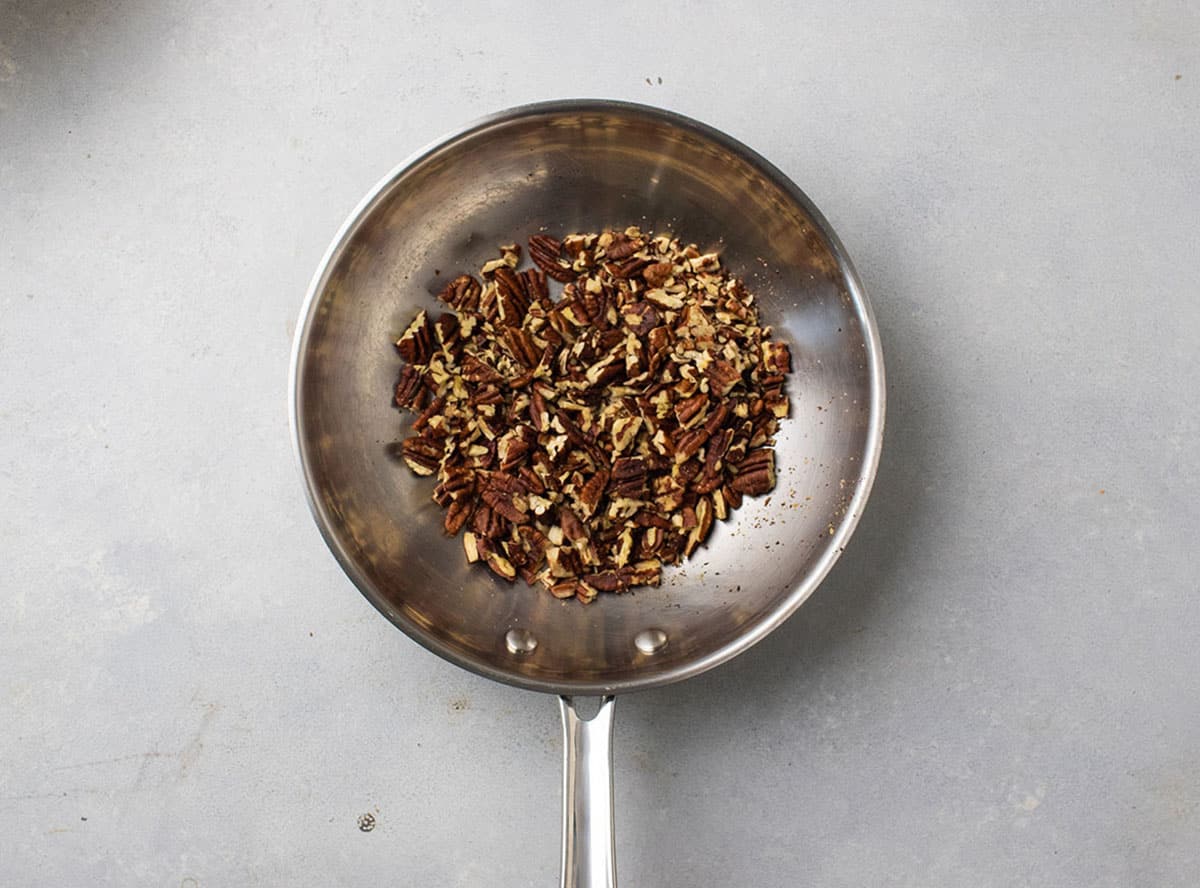
We're adding a few festive mix-ins to give this loaf a bit of pizzazz!
- Toasted pecans - Toast pecans in a small skillet over medium-low heat. Cook them for just a few minutes - and stir constantly to prevent burning - until they're fragrant and have just barely darkened in color. If you’re short on time, you can skip the toasting step and just use pecans straight out of the bag - but if you have a few minutes to spare, a quick toast brings out a ton of flavor!
- Dried cranberries - A handful of craisins gives this loaf pops of bright, tart flavor and a bit of texture!
Riffs and Substitutions
This bread recipe is fairly forgiving - you can make a few different swaps without changing the end product!
- Instead of honey, use sugar, brown sugar, or molasses.
- Swap the pecans for walnuts, almonds, or pistachios.
- Mix up the mix-ins! Throw a handful of chocolate chips or a few teaspoons of fresh orange zest in with the flour mixture for an extra pop of flavor in every bite. Use raisins, dried apricots, or another soft dried fruit instead of cranberries if you like (if you're using large pieces of dried fruit, we recommend giving them a rough chop first to help them distribute evenly through the dough).
- Adjust the flours. Replace some or all of the All Purpose flour with Bread Flour if you like. Bread flour is a little bit higher in protein, which means it will give you a smoother, more elastic dough and a slightly taller loaf. You can also replace up to 100 grams of the flour in this recipe with whole wheat flour. (We don't recommend using more whole wheat flour than that, because it will change the texture of the loaf and give you a denser crumb.)
Step by Step Instructions
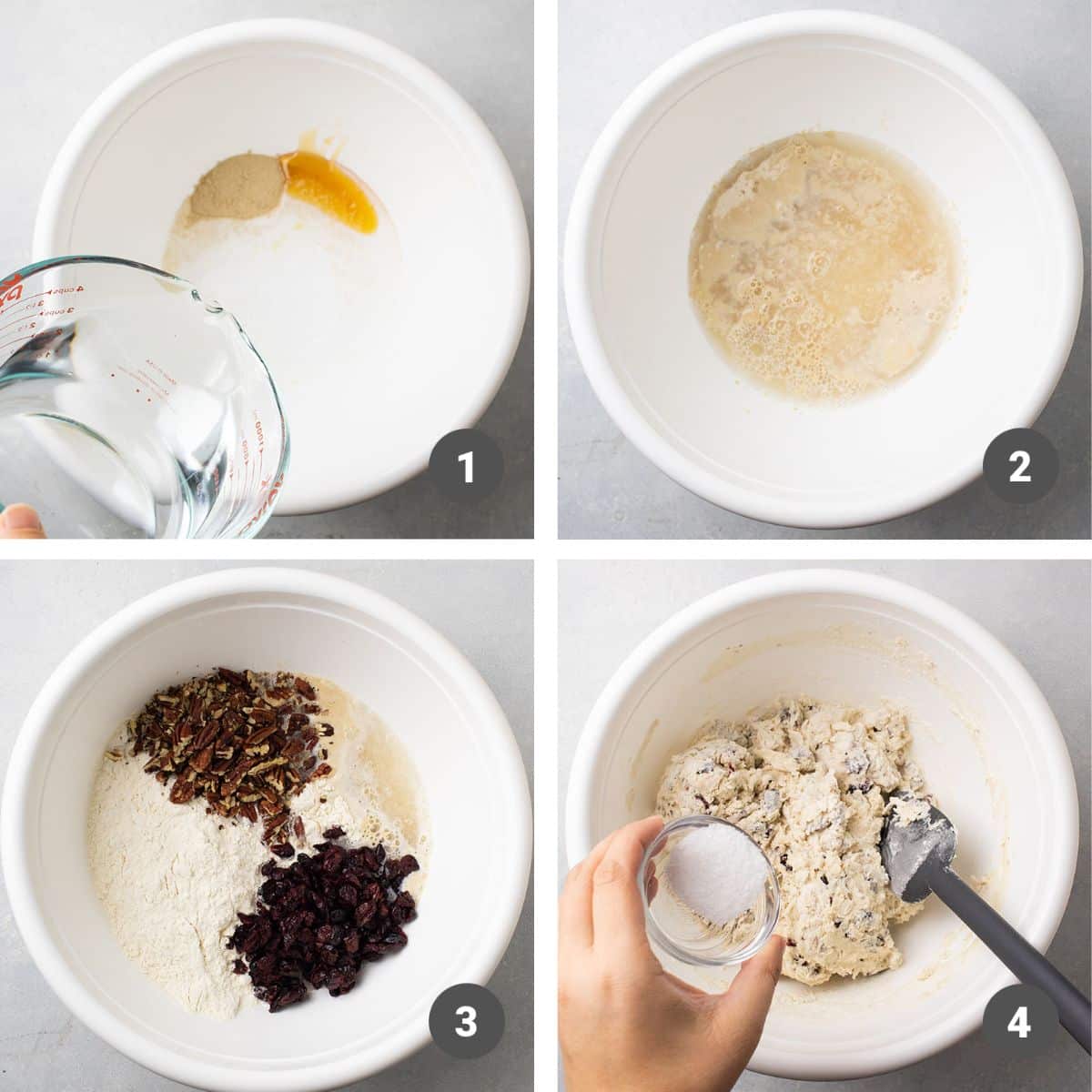
Proof the Active Dry Yeast and honey in a bit of warm water (Image 1, above) until the yeast is foamy and active (Image 2). Stir in the flour, cranberries, and toasted pecans until you have a shaggy dough (3).
Sprinkle the kosher salt across the surface of the dough (4), then continue stirring with a stiff spatula (or use your hands!) until the salt is incorporated and no dry flour remains.
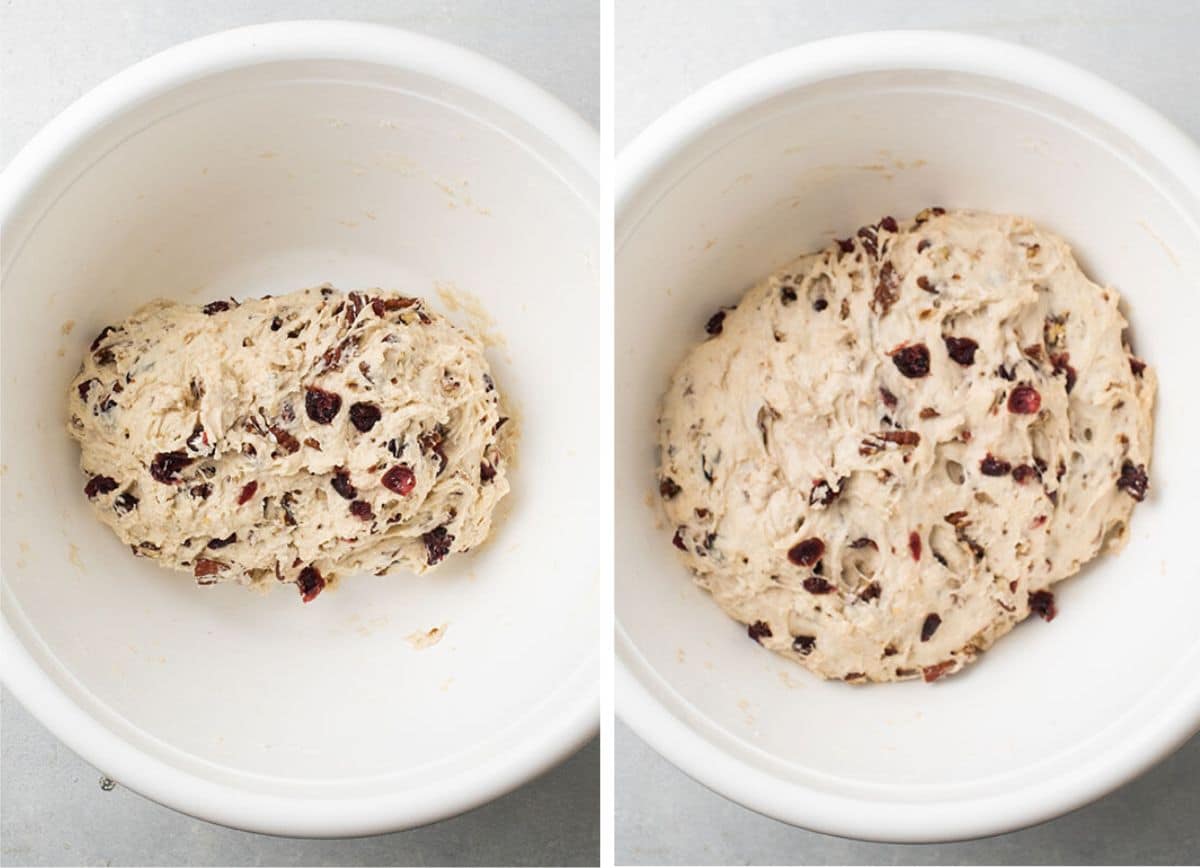
Cover the dough with clean tea towel and let it rise on the counter for about an hour, until it's roughly doubled in size.
Pro Tip: The temperature of your kitchen has a big effect on bread dough's rise time! If your kitchen is especially warm, the dough may rise faster; if it's especially chilly, your dough may need an extra 30-60 minutes to rise fully.
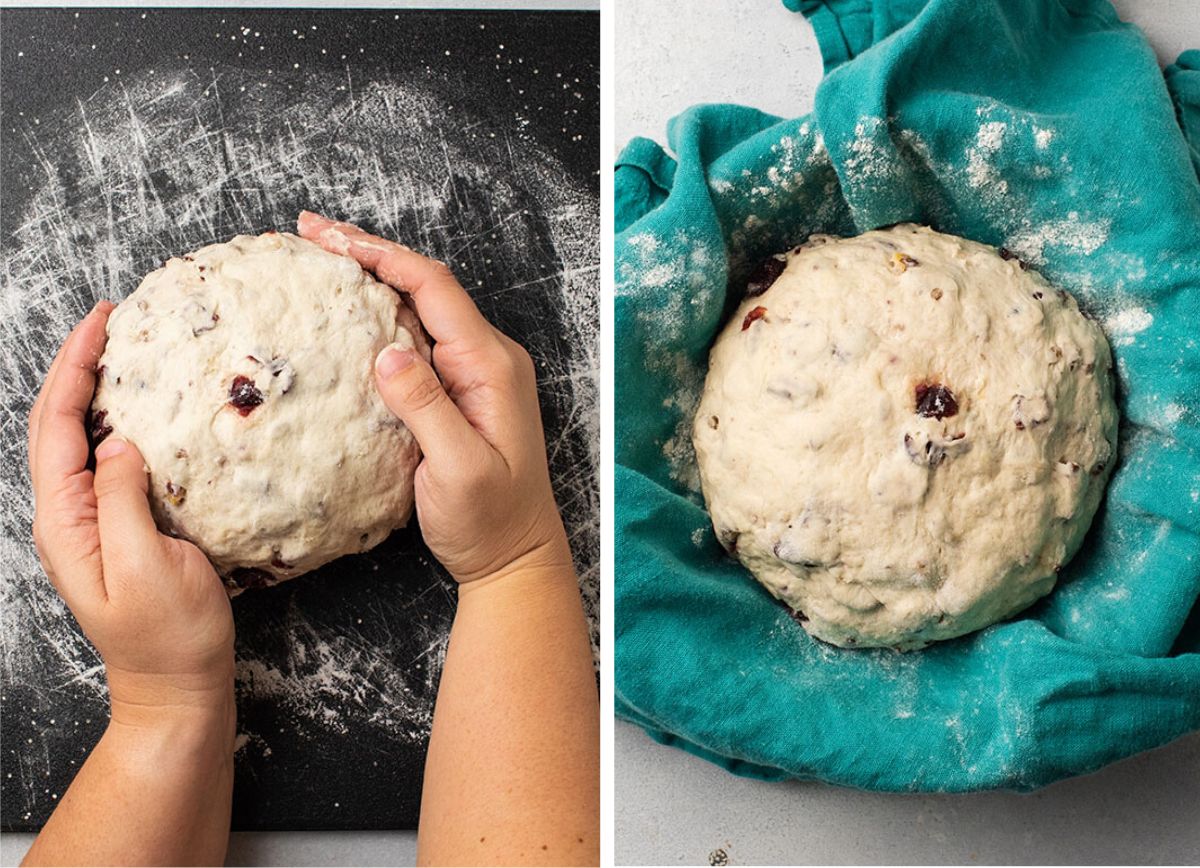
When the dough has risen, tip it onto a lightly floured cutting board and gently fold it into shape. Transfer to a small bowl or proofing basket for one final rise while you heat up the oven.
Tip the bread onto a piece of parchment paper, transfer it to a hot Dutch oven, then cover and bake!
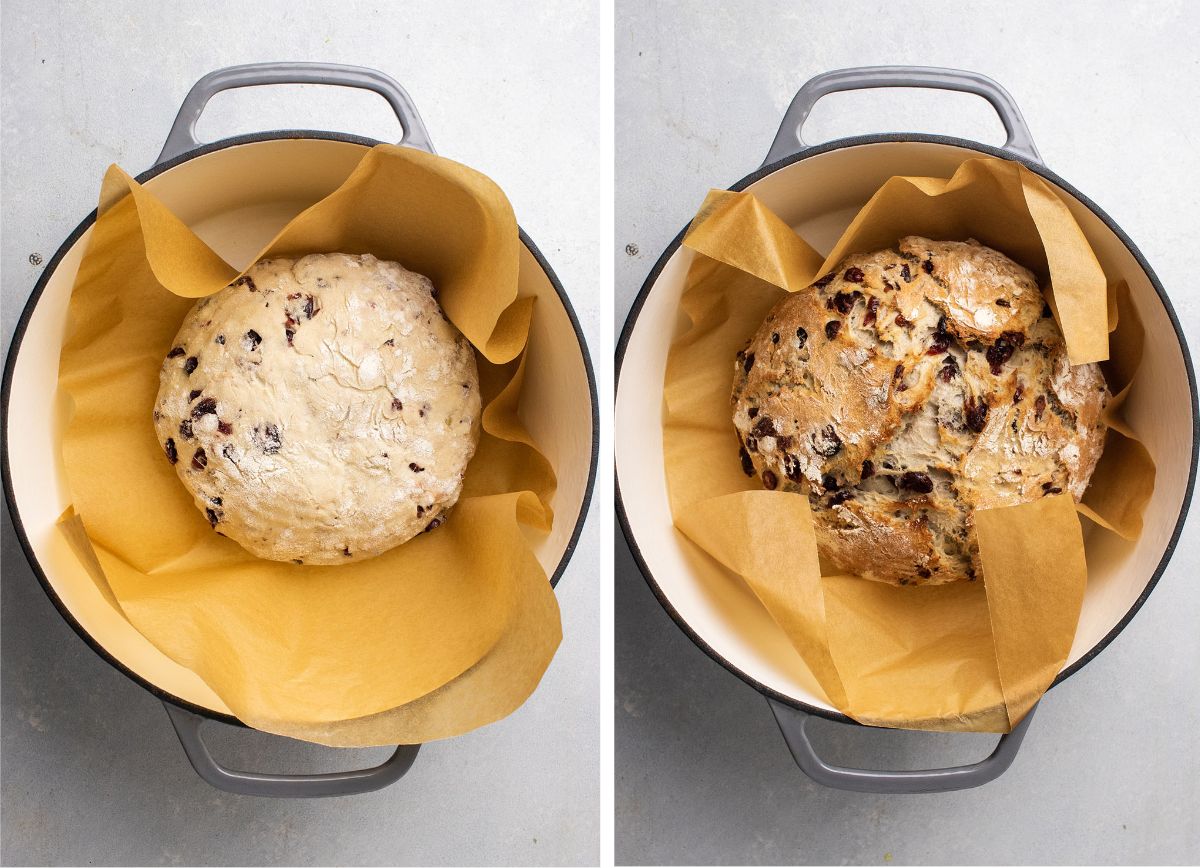
PS - This is a slack (wet) dough
Don't worry if the dough feels shaggy or sticky right after mixing. It won't form a tight, elastic ball or pull away from the sides of a mixing bowl the way that some recipes do, especially since we're adding extra ingredients to the mix.
The berries and nuts here also make for a slightly denser loaf, especially on this quick baking timeline - if you're used to our regular Crusty Bread, you'll notice this loaf will have fewer air pockets and won't be quite as tall, and the dough won't feel quite as stretchy and elastic while you shape it.
If you're brand new to bread baking or a little nervous about working with such a slack dough, feel free to add a little bit of extra flour (it will still taste great!) We also recommend any new bakers start with our traditional Easy Crusty Loaf - that recipe gives you a great baseline for how to mix and shape this type of bread dough!
If you're interested in building bigger air pockets into the dough, though, check out our FREE, 1-hour Artisan Bread Bootcamp - we share a ton of tips for taller, airier bread in that webinar!
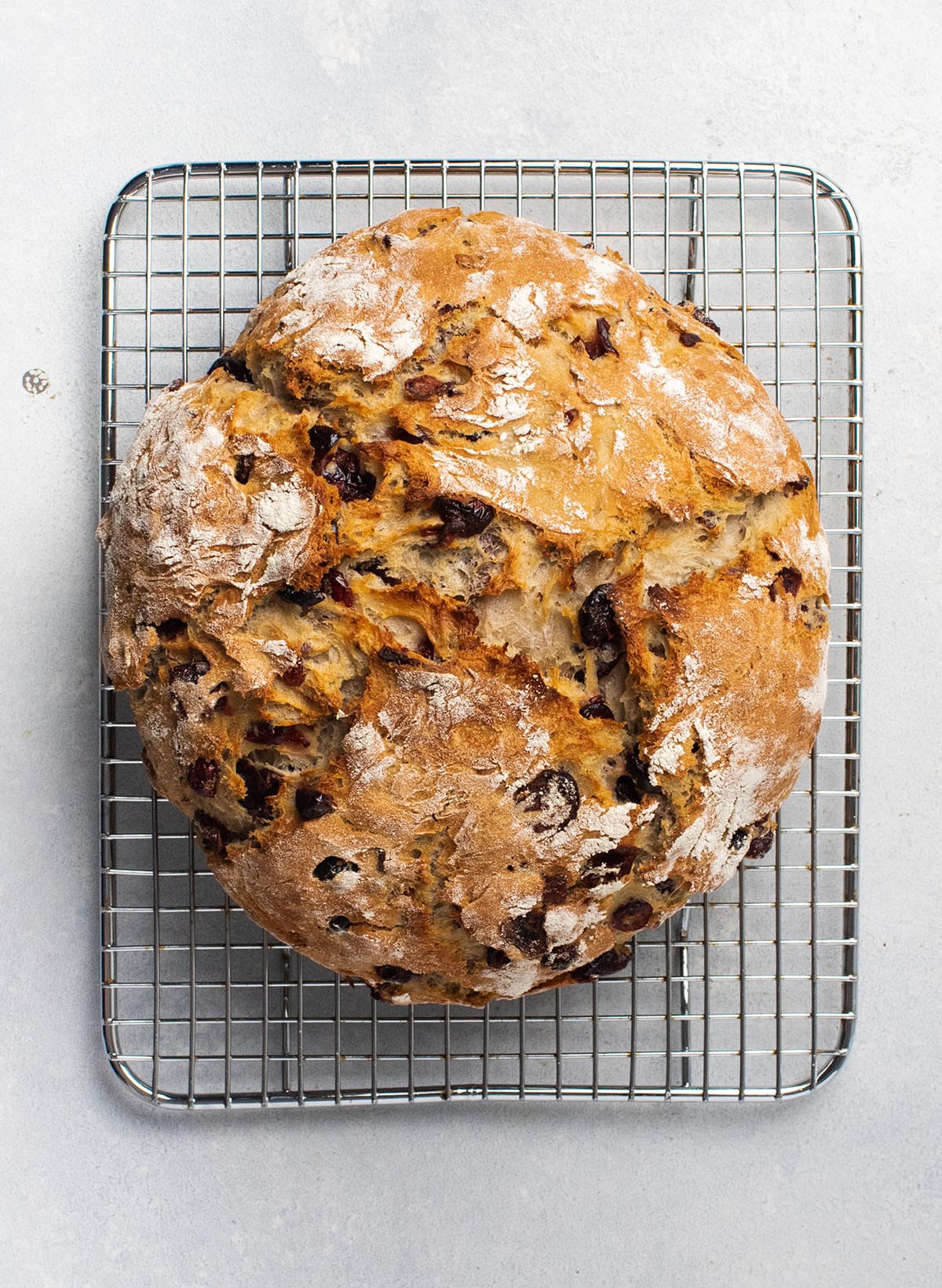
3 Tips for Excellent Homemade Bread
We've tested hundreds of recipes and taught tens of thousands of people to bake with our Easy Crusty Bread recipe and our Everyday Artisan Bread course. Along the way, we've learned a few things: follow these tips for excellent no knead bread!
The most important thing: Use a kitchen scale!
Measuring by volume (with cups) is notoriously unreliable. Everyone measures a cup of flour a little differently: it’s easy to accidentally use too much flour in a recipe and end up with dry, dense bread. (We've run a ton of experiments on this - check out our free Bread Bootcamp for a more detailed look at the results!)
Different brands of salt also have larger, heavier flakes: A teaspoon of one brand of salt can actually be much saltier than a teaspoon from a different brand.
But when you use a kitchen scale to measure by weight (in grams), you get a perfect measurement every time.
No kitchen scale? Measure your flour with the scoop and level method for best results!
Adjust for the weather
The temperature and humidity in your kitchen play a big role in bread baking. If your kitchen is especially chilly, you may need to extend the rise time for your bread to fully double in size (and if it's especially warm, it may not take the full hour!)
Use high quality flour
The type of flour you use matters. A LOT. We recommend baking with King Arthur flour for best results - their flours are the most consistent, and they have a high protein content (which gives you a stronger, more elastic, less sticky dough!)
A note about stand mixers
We love mixing this dough by hand in a large bowl, but you can certainly use an electric mixer (like a KitchenAid stand mixer) fitted with the dough hook if you prefer! Just keep an eye on it as the mixer runs: Stand mixers can often trap pockets of flour on the very bottom of the bowl, which makes the mixing process take a lot longer. If your mixer feels like it's not really doing anything, turn it off, remove the bowl, and flip the dough over a few times by hand to help it get back on track!
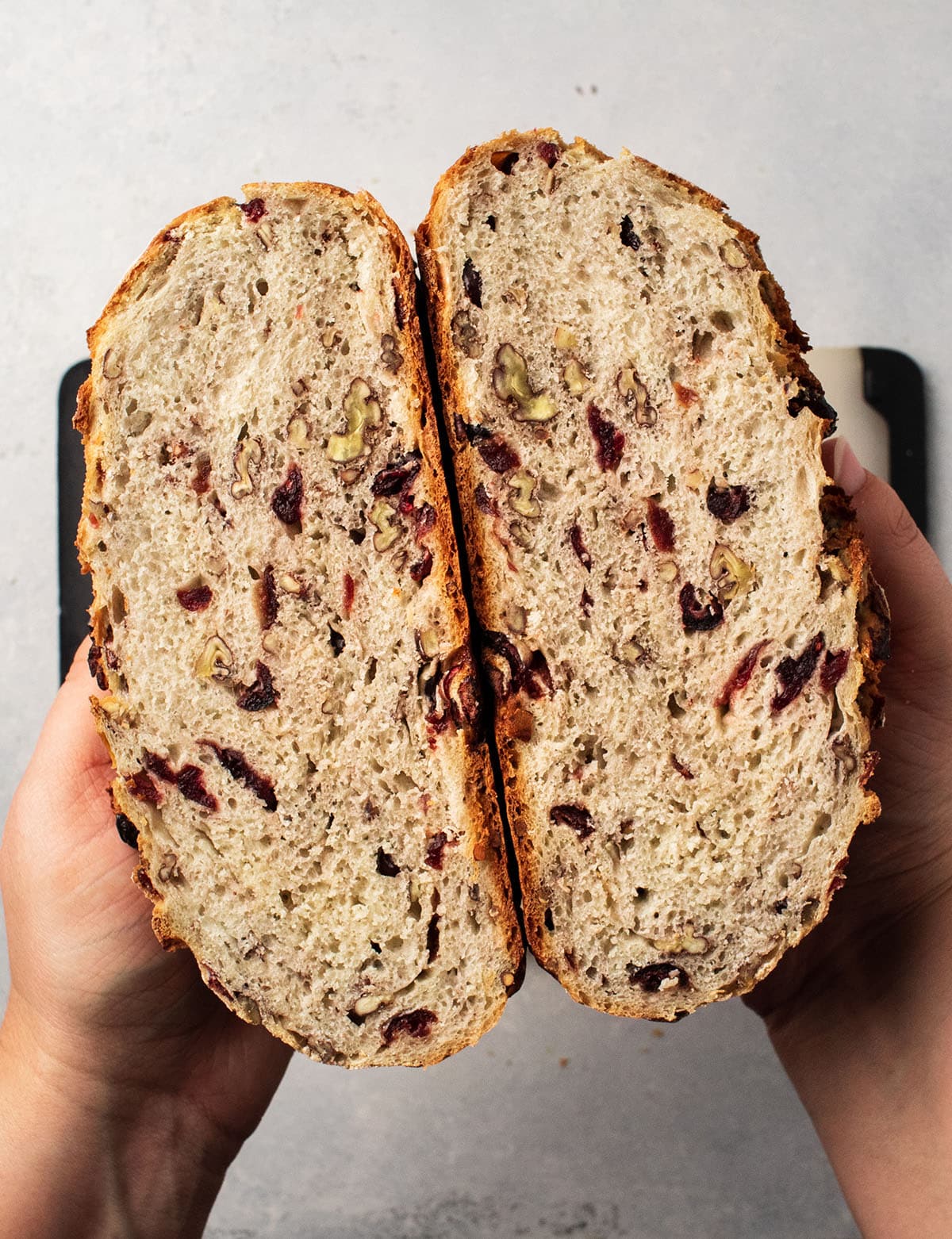
Serving Suggestions
Serve this bread fresh with a quick apple spinach salad or a cozy butternut squash risotto, use it as the base for a leftover roasted turkey breast sandwich, or make an out-of-this-world cranberry brie French toast (pro tip: add a little vanilla to your French toast batter for a cozy Christmas morning breakfast!) It's also good on its own with a bit of butter, a scoop of leftover cranberry sauce, or a drizzle of honey.
A few FAQs
Yes! Check out our small batch crusty bread recipe for more guidance on baking mini loaves (including adjusted baking times).
This makes a pretty large loaf of bread: a double loaf is a bit too big to fit comfortably in a Dutch oven. If you'd like to double the recipe, we recommend mixing the dough all together and dividing it into two separate loaves for baking. Make and shape the dough as directed, store one loaf (in its proofing basket) in the fridge while the first loaf bakes, and then bake the second loaf once the first loaf is done.
Yes! We love using a Dutch oven to create a crispy, crackly crust on our bread, but it's definitely not the only way to bake great bread at home. Check out our post about how to bake bread without a Dutch oven.
The mix-ins in this dough create a tighter, denser loaf, which makes it even more important to build strength into our dough. In this recipe, we primarily do that by folding the dough over on itself while shaping, until the dough feels stiff and begins to resist our folds. This takes practice: don't worry if the bread is on the flatter side the first few times! If you're new to baking, we recommend starting with our Easy Crusty Bread to get a feel for the shaping technique. We also share several techniques for taller, stronger loaves in our free Bread Bootcamp Webinar. And of course, you can skip the learning curve entirely and let us take you through homemade bread A to Z in our Everyday Artisan Bread course!
You can replace up to 100 grams of the All Purpose flour in this recipe with whole wheat flour if you like. We don't recommend using more than 100 grams of whole wheat flour here; it will change the texture of the loaf and result in a denser crumb.
We honestly don't love fresh cranberries in this recipe - they're a little bit too tart and bitter, and there isn't enough sweetness in the bread itself to balance that strong flavor out. Sweetened dried cranberries give you the perfect amount of tartness without being overpowering!
Because we put this bread into the oven with the seam-side up, we don't need to take the extra step of scoring the top of the dough here! Scoring bread dough creates a "weak point" on top of the loaf, which basically just tells steam where to escape as the bread bakes - but the natural cracks along that seam on the loaf's surface serve the same purpose! That said, if you love the look of scored bread, simply bake this loaf seam-side DOWN and use a sharp knife to cut a long slice across the surface just before putting it in the oven. (We have an entire lesson on scoring bread in our Everyday Artisan Bread course if you'd like to learn more!)
Yes - just reduce the amount of yeast by 25%.
Have another question?
- See even more detailed FAQs about bread baking in our Easy Crusty French Bread post.
- Learn to bake taller, airier loaves with our FREE Bread Bootcamp Webinar.
- Enroll in our Everyday Artisan Bread course for personal support and step-by-step training videos that take you through every buzzword and baking technique (including incredible homemade sourdough!)
🎥 Recipe Video
More Cozy Bread Recipes
Did you make this recipe? Leave a comment and star rating below to let us know how it turned out!
Print📖 Recipe
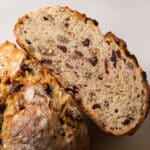
Cranberry Pecan Bread
- Prep Time: 15 minutes
- Inactive Time: 1 hour 30 minutes
- Cook Time: 45 minutes
- Total Time: 2 hours 30 minutes
- Yield: Makes 1 loaf 1x
- Category: Bread
- Cuisine: American
- Diet: Vegetarian
Description
This easy cranberry pecan loaf is perfect for holidays and cozy weather!
Ingredients
- 9 grams active dry yeast (about 2 ¼ teaspoons)
- 6 grams honey (about 1 teaspoon) (use sugar if you prefer)
- 300 grams warm water (about 1 ¼ cups; see recipe notes)
- 400 grams All Purpose Flour (2 ½ - 3 ½ cups) plus extra for dusting (see recipe notes)
- 1 cup dried cranberries
- 1 cup toasted pecans, roughly chopped (toasting is optional but recommended)
- 8 grams kosher salt (1-2 teaspoons, depending on the brand)
Instructions
Proof the yeast:
- Add yeast, honey, and warm water to a large mixing bowl (you can also use a stand mixer fitted with a dough hook). Let the yeast proof for 5-10 minutes, until the mixture is foamy. Note: If your yeast mixture doesn’t foam up, that’s a sign that your yeast is dead or expired, and your bread won’t rise.
Mix the dough and first rise (1 hour):
- Add flour, dried cranberries, and toasted pecans to yeast mixture. Mix with a sturdy spatula until nearly all of the flour is incorporated. Note: If you have time, let the bread rest here for 15 minutes or so before moving on to the next step - it will make it easier to mix everything together and give you a slightly taller loaf!
- Add salt to bread dough. Use a sturdy spatula or clean hands to mix everything into the dough until ingredients are evenly distributed and no dry flour remains. The dough should be slightly shaggy and sticky.
- Cover bowl with a clean tea towel and let rise on the counter for about 1 hour, until dough has doubled in size.
Shape the dough and final rise (30 minutes):
- When dough has risen, place an empty dutch oven (with the lid on) in your oven and heat to 460° Fahrenheit.
- Lightly flour a large cutting board.
- Tip the dough out of the bowl and onto the cutting board. DO NOT PUNCH THE DOUGH DOWN - you want to keep all those nice air bubbles intact so you have an airy, delicious loaf of bread. Note: If the dough is sticking to the bowl a little bit, wet your hand with a bit of cold water and gently separate the dough from the bowl to get it all out.
- Shape the dough into a round loaf: Pull each corner of the dough in towards the center (like you're folding an envelope) and repeat until the dough feels tight and begins to resist your folds. Add more flour to the cutting board as you go if needed. Flip the dough over and pull it into a round loaf.
- Flour a proofing basket or a medium-sized mixing bowl and place your loaf into it seam-side down. Cover with a tea towel and let rise another 30 minutes or so while you preheat the oven. Note: I like to line my proofing basket or mixing bowl with a clean linen napkin to distribute the flour more evenly and help with cleanup.
Bake (30 minutes)
- When the oven is hot, you're ready to go! Lay a piece of parchment paper down on your counter or a cutting board (optional - it makes transferring the bread easier!)
- Tip your bread dough gently out of the proofing basket onto the parchment paper.
- Use oven mitts to pull the hot dutch oven out and remove the lid.
- VERY CAREFULLY (without burning yourself!) use the sides of the parchment to lift the bread up and place it into the hot Dutch oven.
- Put your oven mitts back on, place the dutch oven lid back on the pot, and slide the whole thing back into your hot oven.
- Cook bread for 30 minutes.
Remove the lid and finish baking (5-15 minutes)
- After 30 minutes, remove the lid from your dutch oven. The bread should be taller, crusty, and very lightly browned. Continue cooking the bread, uncovered, for 5-15 minutes more until the bread has deepened in color and you have a beautiful brown crust.
- When bread is done, use oven mitts to pull the pot out of your oven.
- Use a long spatula or the corners of your parchment paper to carefully lift the bread out of the dutch oven and onto a cooling rack. Let cool for at least 1 hour before cutting into it.
Notes
Additions and Substitutions. Use raisins or another soft dried fruit (cherries, apricots, figs, etc) in place of dried cranberries here if you like. Swap the pecans for walnuts, almonds, or pistachios. Use bread flour in place of all purpose if you like. Replace up to 100 grams of all purpose flour with whole wheat flour (we don’t recommend using more wheat flour than that as it can alter the texture of the final loaf).
Toast the pecans for extra flavor. If you’re short on time, you can skip this step. But if you have a minute or two to spare, giving your pecans a quick toast in a skillet brings out a TON of flavor! To toast pecans, place the nuts in a small skillet over medium-low heat. Cook them for just a few minutes, stirring constantly, until they're fragrant and have just barely darkened in color. Let them cool completely, then give them a rough chop and add them to your bread dough.
If you have a kitchen scale, please use it! Measuring by weight is much more accurate than measuring by volume (with cups) and will give you more consistent bread. That being said, you can certainly make great bread without a kitchen scale! To measure flour in cups: If you measure flour by dipping your cup straight into the bag or bin and shaking off the excess, plan to use about 2 ½ cups of flour. If you measure by stirring the flour with a spoon or scoop before scooping it into a measuring cup and leveling it off (the “scoop and level” method), plan to use about 3 to 3 ½ cups of flour. You can always add more flour if you need to - just be aware that this is a relatively slack (wet) dough, so it will be a bit shaggy and sticky at first (but it will smooth out and become more elastic as it rises and again as you shape it!)
Equipment notes. We recommend a 4- to 6-quart Dutch oven for best results. Le Creuset, Staub, Marquette Castings, and Lodge are all good choices. As always, please check the care instructions on your equipment: Be sure your Dutch oven is safe at high temperatures and double-check that it has a metal (not plastic) knob on the lid. We use an 8.5-inch proofing basket, but an 8- or 9-inch banneton or medium-sized mixing bowl also work well for the final rise. Be sure to use parchment paper when baking (not waxed paper).
Ingredient notes. For best results, use a high-quality flour for this recipe: We recommend King Arthur Flour and Bob's Red Mill flour. This recipe was developed with Diamond Crystal Kosher Salt, which is colloquially known as the "least salty salt." If you need to use table salt or another fine salt and you are measuring by volume with a teaspoon, reduce the amount of salt by ¼ teaspoon (if you're measuring by weight, don't worry about what brand of salt you're using - just follow the gram measurements!)
How warm should my water be? A good rule of thumb is "warm to the touch." Too-hot water (typically 130 degrees F and above) will kill your yeast, but use too-cold water and your yeast will move verrrrry slowly. We like to use water that's between 95 and 110° Fahrenheit. You should be able to comfortably hold your hand under water running at about 100 degrees - it should feel warm, but not hot. Use a kitchen thermometer for a precise measurement if you like!
No Dutch oven? See this post for alternative baking methods (you can still make great bread without fancy equipment!)
How to store this bread. If you have a full half-loaf left, store it cut-side down on a cutting board on the counter for up to 24 hours (no need to cover it!) Store extra sliced bread in an airtight container on the counter for up to 3 days. This bread also freezes very well - wrap it tightly and store in the freezer for up to 4 months, then defrost on the counter when you’re ready to use it.
Want a taller loaf of bread? The mix-ins can weigh this dough down a bit and make it a little denser than other loaves: it won’t be as tall or airy as, say, a loaf of sourdough. Check out our FREE Bread Bootcamp Webinar for our favorite techniques to make taller, airier loaves (one of our favorite tips: Cover the dough and put it in the fridge overnight for its first rise!)
Still have questions? We cover a ton of other info in the FAQ section in our Easy Crusty Bread recipe, and we walk you through everything you need to know about baking bread at home in our Everyday Artisan Bread online course.
Nutrition
- Serving Size:
- Calories: 344
- Sugar: 15.8 g
- Sodium: 391.6 mg
- Fat: 10.6 g
- Carbohydrates: 57.7 g
- Protein: 6.9 g
- Cholesterol: 0 mg


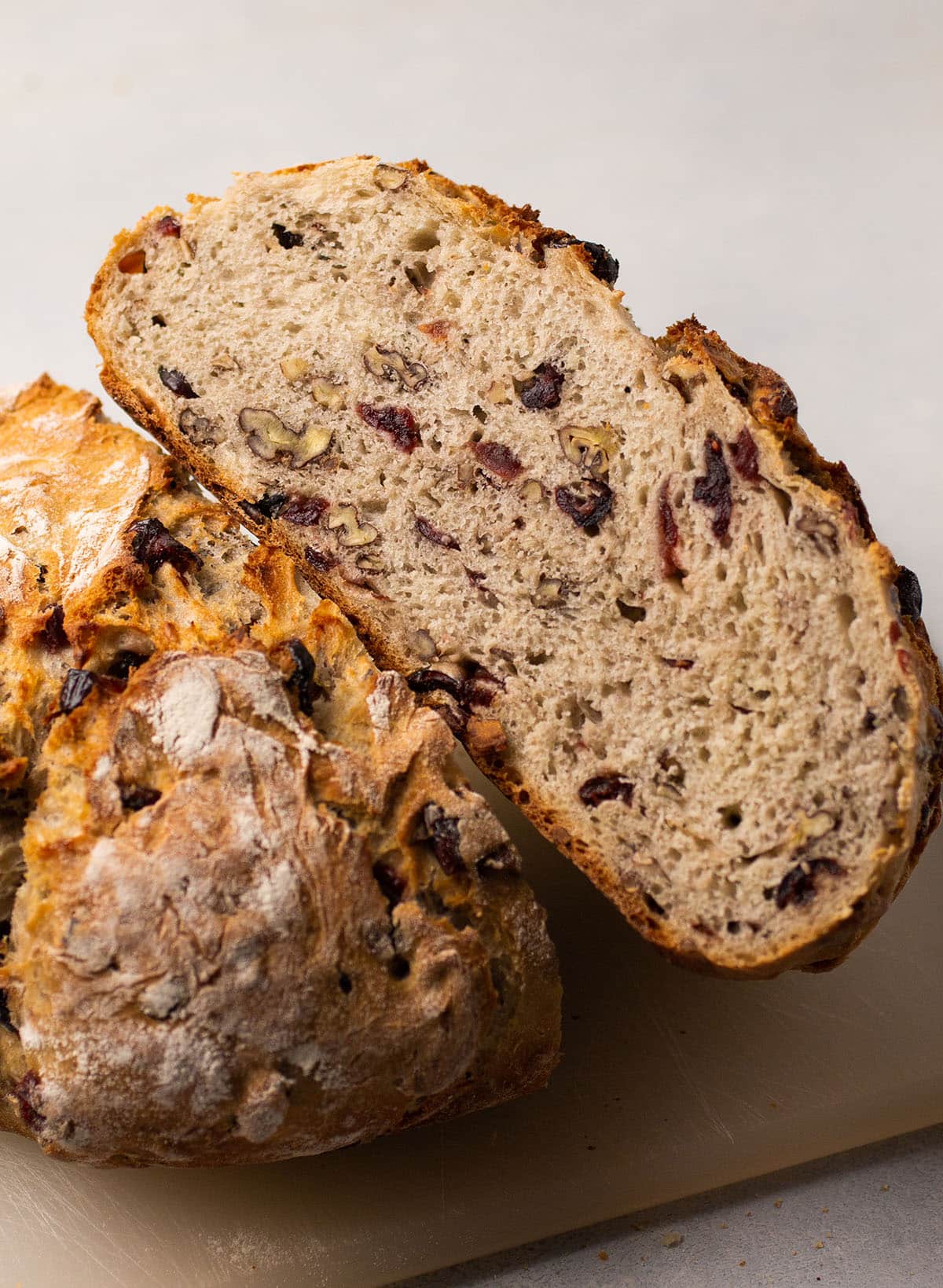
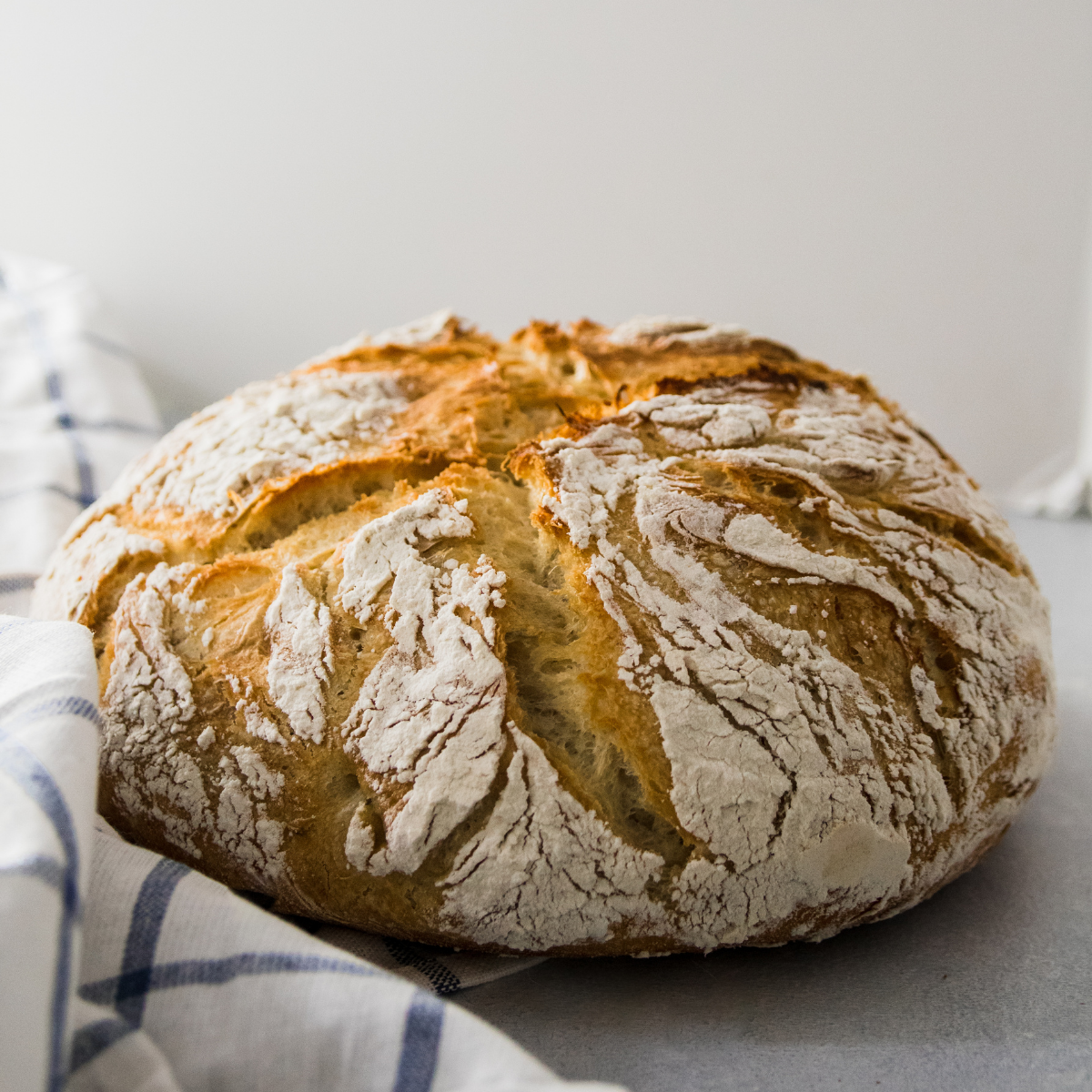
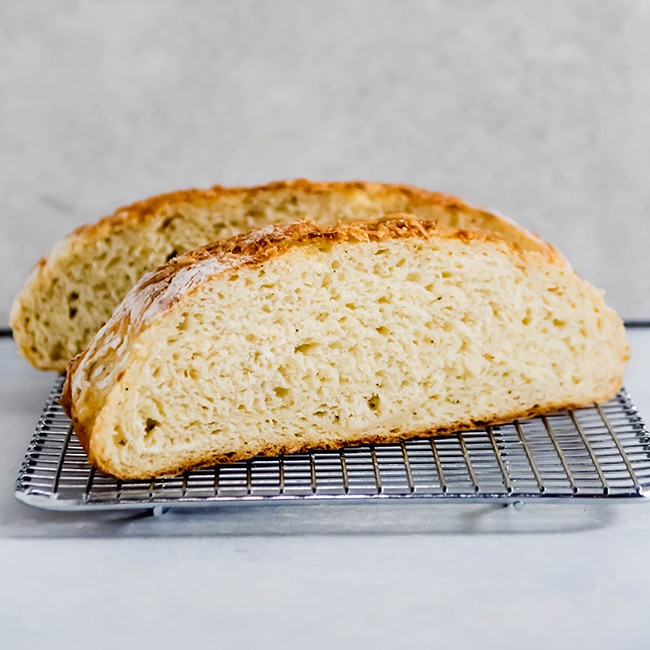
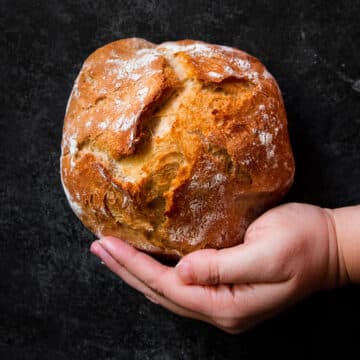

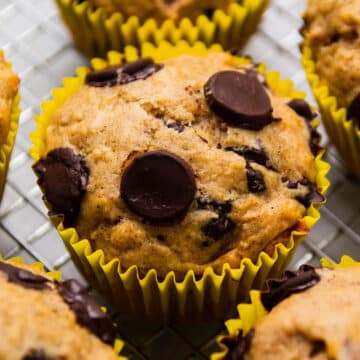
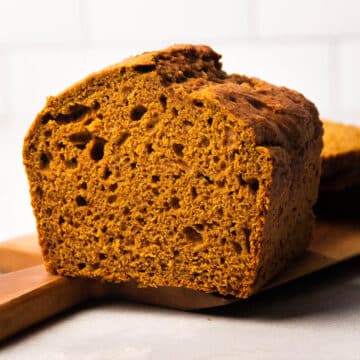
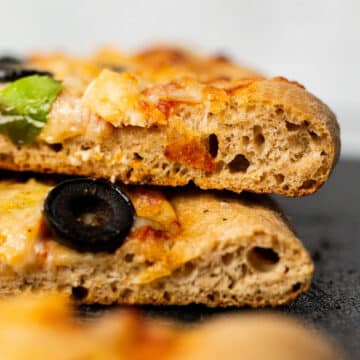
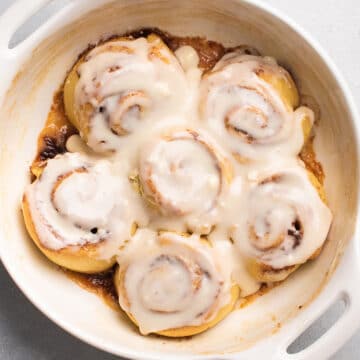
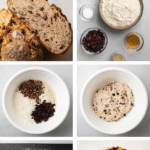
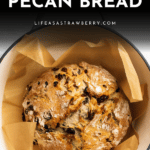
Marilynn
I'm gluten sensitive, and can eat limited amounts of gluten. What bread flour would you recommend?
Team Life As A Strawberry
This recipe hasn’t been tested with gluten-free flour, and straight substitutions of gluten-free flour do tend to affect the texture and outcome of baked goods quite a bit, so we don’t recommend swapping the flour here for a gluten-free blend! If you are looking to use a standard bread flour, we recommend the King Arthur or Bob's Red Mill bread flours.
sd breadman
Fast, easy and tasty, and needed in a hurry bc my sourdough starter was not ready (made 2x the original formula) for my annual Thanksgiving bake. Chopped ¼ of the nuts to get good distribution of the nutty flavor throughout the loaf. Used machine to mix lightly, oiled hands to handle the highly hydrated dough. Baked on a stone, pre-sprayed oven with water before loaf insertion and then ⅔ c boiling water onto cookie sheet at bottom of oven for steam after, closing the door quickly. The bake should be long enough to drive out al there water.
Next time will replace up to ¼ of the APF flour with whole wheat for flavor and nutrition and and another ¼ with a higher protein bread flour to replace the gluten.
This will be my new go-to cranberry-pecan formula.
Thanks for sharing!
Team Life As A Strawberry
We're so happy you loved this holiday favorite recipe!
Bill
Can this recipe be used in a bread machine?
Team Life As A Strawberry
Hi Bill! We haven’t tested this dough with a bread machine so I can’t say for sure. It’s very easy to mix by hand, though!
Sue
This bread is absolutely delicious! I am definitely going to make this for Thanksgiving. If I make it the day before and do not slice it, does the bread need to be wrapped up? What about reheating it just before dinner? Should it go in the oven uncovered and at what temperature and for how long? Thanks so much for a great and easy bread recipe. Sue
Team Life As A Strawberry
We love that this bread will be on your Thanksgiving table! Our recommendation would be to limit the time cooked with the lid off (step 1 in the finish baking section of the instructions) to just a few minutes, that way it can finish cooking but won't risk getting too dark while reheating the next day. Then let it cool completely and store on the counter overnight (no need to wrap). To keep it simple, reheat uncovered right on the baking rack at whatever temperature you're using for other items on your Thanksgiving table! Keep in mind the lower the temperature, the longer it will take to warm through.
DebL
This bread is awesome. Ive made several of your no knead breads and they're all great! I followed your recipe to the T, except I did use 2 T of honey. This bread is crispy and moist and I do slather it with butter.
Shadi
This was amazing and such a treat! Thank you! Everyone in my family loved this bread.
Team Life As A Strawberry
We're SO happy to hear everyone loved it!
Kathleen
Great combination of flavors in this cranberry pecan bread. It looks and sounds fabulous.
Team Life As A Strawberry
YAY! We hope you enjoy it!
Beth
This looks so good! I love the cranberries and nuts. Now all I need is some butter.
Team Life As A Strawberry
We hope you love it!
Priya Srinivasan
Oh my god, that is one gorgeous looking bread! Love that crust! Would love mine with a generous slather of butter! Brilliant share!
Team Life As A Strawberry
This bread is GREAT with butter!
Rosalind
Can I bake it in a loaf tin instead tks
Team Life As A Strawberry
Check out How to Bake Crusty Bread without a Dutch Oven for our top recommendations!
DebL
This bread is awesome. Ive made several of your no knead breads and they're all great! I followed your recipe to the T, except I did use 2 T of honey. This bread is crispy and moist and I do slather it with butter.
Rhonda @ Life As A Strawberry
So glad you liked it!